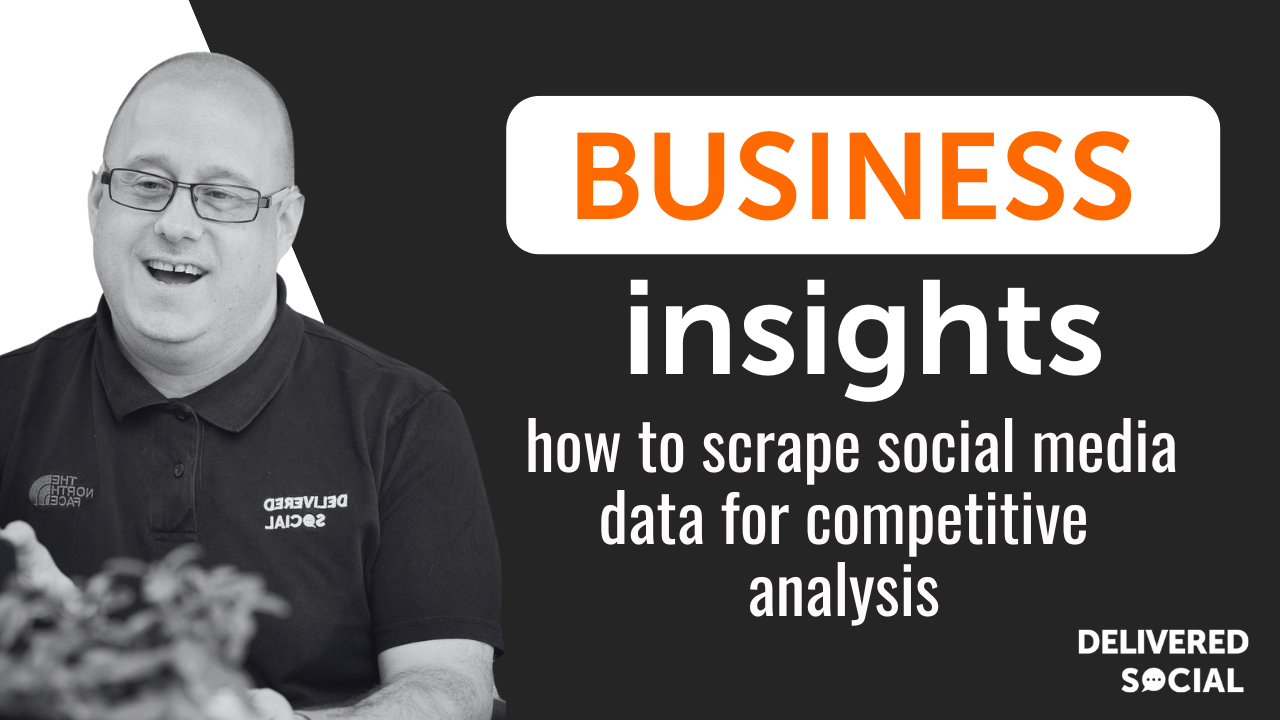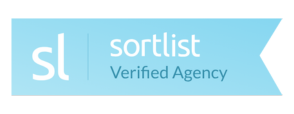
When social media first emerged in the early 2000s, it disrupted the world of business in ways that nobody could have predicted. Today, targeted advertising and social media marketing are standard components of the modern business model. However, many business owners overlook one of the most efficient ways of leveraging social media to their advantage: web scraping.
In this article, we’ll explore this most powerful of tools in a marketer’s arsenal. Specifically, we’ll discuss how you can use web scraping to gather valuable data from social media platforms, gain insights into your competitors, and monitor industry trends. Let’s get started.
What is web scraping?
Web scraping is the process of extracting data from websites. It’s an entirely automated way of doing things, and negates the dull, manual rigmarole of scanning through multiple websites manually.
The practice of web scraping has been around since the early days of the World Wide Web. In fact, the first search engine, Archie, which was created in 1990 by Alan Emtage, was essentially a web scraper. It was designed to index files on FTP servers and create a searchable index for users to find content on the web.
Since then, web scraping has evolved into a sophisticated process that can extract data from almost any website on the internet. In the early 2000s, Google began using web crawling to index billions of web pages and make them searchable through its search engine. Today, Google’s web crawler, known as Googlebot, crawls and indexes over 100 billion web pages every month.
Web scraping has also become an essential tool for businesses looking to gather competitive intelligence and stay ahead of their competitors. Companies can use web scraping to gather information on pricing, product features, customer reviews, and more from their competitors’ websites. This information can then be used to inform business decisions and improve the company’s products and services. Tools like Multilogin are particularly useful for businesses engaging in web scraping, as they help manage multiple accounts and create unique browser profiles that avoid detection by websites.
How can web scraping be used to gain social media insights?
When we’re discussing the use of web scrapers on social media platforms in particular, some of the most common targets for data extraction include:
- User profiles — to gather demographic data about your target audience. This can include age, gender, location, interests, and occupation. This information can help you to understand your audience and create targeted content that resonates with them.
- Posts — to analyze the content and format of your competitor’s posts. This can help you to identify what type of content performs best in your industry, as well as the language, tone, and style that resonates with your target audience.
- Comments — to analyze how people are engaging with your competitor’s content. This can help you to identify common themes, sentiments, and feedback from your target audience.
- Likes and shares — to gain insight into the kind of content your target audience finds most engaging. This can help you to optimize your content strategy and create more engaging posts that resonate with your audience.
- Hashtags — to identify popular trends and conversations related to your industry. This can help you to understand the topics and themes that are important to your target audience, and create content that is relevant and engaging.
- Influencers — to identify the most influential people in your industry. This can help you to find potential brand ambassadors, influencers, or partners who can help you to reach a wider audience and build brand awareness. Influencers can have a profound effect on businesses especially charities!
What’s the best way to scrape social media platforms?
As you might expect, social media platforms have become veritable treasure troves of valuable data over the years. However, manually collecting this data can be a time-consuming and tedious task.
This is where web scraping comes in, enabling your business to automate the data collection process and extract specific data points from social media platforms. Let’s examine some of the ways you might choose to scrape social media data:
No-code web scraping
No-code web scraping tools allow users to extract data from websites without writing a single line of code — handy if you’re more technophobe than technophile. Instead of programming the scraper through code, these tools incorporate a GUI (graphical user interface), making them far more accessible, and a good entry point for those who are new to the practice. For businesses that require precise and up-to-date data at scale, a scraping API offers a solution specifically designed to handle tasks like extracting large datasets, bypassing anti-scraping measures, and integrating seamlessly into existing systems for real-time data retrieval.
No-code web scraping tools are generally user-friendly and easy to use, even for those without programming experience. Some popular no-code web scraping tools include ScrapingBee, and Import.io.
Pros:
- User-friendly and easy to use
- No programming experience required
- Fast and efficient data extraction
Cons:
- Limited customization options
- Limited functionality compared to self-built or open-source web scrapers
- Expensive subscription plans for advanced features
Self-built web scraping
Self-built web scrapers involve writing custom code to extract data from websites. This requires fairly extensive programming knowledge and skills, but it also offers a high degree of customization and flexibility – when scraping web it is better to use residential proxies
To increase the success rate of these scraping efforts, it’s important to route requests through reliable proxies that help evade detection and maintain session consistency and with self-built web scrapers, businesses can create custom scripts to extract data from social media platforms based on their specific needs.
With self-built web scrapers, businesses can create custom scripts to extract data from social media platforms based on their specific needs. Popular web scraping libraries include Beautiful Soup and Urllib3.
Pros:
- High degree of customization and flexibility
- Ability to handle complex data extraction scenarios
- Cost-effective compared to subscription-based web scrapers
Cons:
- Requires programming knowledge and skills
- Time-consuming and labor-intensive
- Requires ongoing maintenance and updates
Open-source web scraping
Open-source web scraping refers to using free and publicly available tools and libraries, such as Beautiful Soup and Scrapy, to extract data from websites. This approach requires more programming knowledge than you’d need to use a no-code system, but less than building your scraper from scratch — it’s a good middle ground.
These web scraping tools are built and maintained by a community of developers and are available for anyone to use and modify. This makes them a cost-effective and flexible way of gathering data.
Pros:
- Free and open-source
- High degree of customization and flexibility
- Ability to handle complex data extraction scenarios
Cons:
- Requires some programming knowledge and skills
- May require additional customization to fit specific use cases
- Lack of customer support compared to subscription-based web scrapers
In summary, open-source web scraping provides granular control and flexibility, self-built web scraping offers complete customization and tailored solutions, and no-code web scraping provides an easy-to-use interface for quick data extraction.
How to scrape social media platforms: a step-by-step guide
Given that there’s more than one way to scrape the web, it’s impossible to write a one-size-fits-all guide to scraping social media.
However, in the interest of making things as clear as possible, we’ve come up with a set of general best practice steps that can be applied to any scraping session, whether your scraper is self-built or you’re using a no-code platform.
- Define your objectives. Before starting, you need to have a clear understanding of what data you want to extract from social media platforms and why. Define your objectives clearly, such as identifying your closest competitors, analyzing their social media presence, performing sentiment analysis on your customers, or figuring out which influencers are best placed to represent your brand. This will help you to focus your efforts and ensure that you get the data that you need to achieve your goals.
- Choose the social media platform. Choose the social media platform you want to scrape. Popular platforms include Facebook, Twitter, Instagram, LinkedIn, and YouTube. Depending on your objectives, you may choose one or more platforms to scrape.
- Identify the data to scrape. Once you’ve chosen the social media platform, identify the data you want to extract. This may include user profiles, posts, comments, likes, shares, and engagement metrics.
- Extract the data. Run the scraper and extract the data from the social media platform. Make sure to follow the site or app’s terms of service and respect user privacy.
- Clean and preprocess the data. Once you’ve extracted the data, clean and preprocess it to remove duplicates, irrelevant information, and errors.
- Analyze the data. Assess the data to identify patterns, trends, and insights about your competitors. Use data visualization tools like Tableau and Power BI to create interactive dashboards and reports.
- Interpret the results. Interpret the results and draw conclusions about your competitors’ social media strategy, audience, and engagement.
- Take the necessary actions. Use the insights gained from your competitive analysis to improve your social media strategy, optimize your content, and engage with your audience more effectively.
So there you have it — everything you need to know about using web scrapers to extract information from social media platforms! Thirsty for more marketing insights? Check out our 5 Helpful Tips to Grow a Massive Twitter Following for your Business, or find out why blogs are crucial for your digital marketing company.
Interested In Working Together?
Introducing Delivered Social. We’re The Most-Rated Digital Agency In Surrey & Hampshire – We’ve Got To Be Doing Something Right.
Delivered Social is a digital marketing agency with one mission—to help businesses grow. We’re famous in Guildford and Portsmouth for our social clinics. We believe in free advice. We build lasting relationships because our team prides itself on being helpful, which our clients appreciate.
If you are looking for a new website or an agency to manage your social media presence, we can help.
If you need something slightly different, here's a super handy list of all our services, or you can always email us.



















